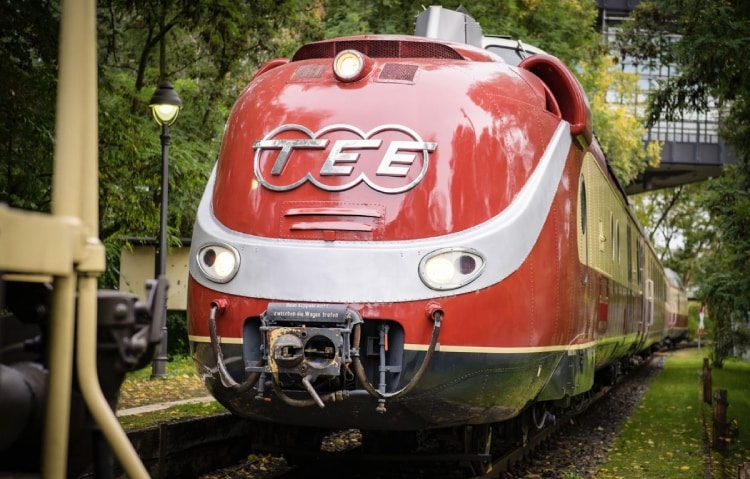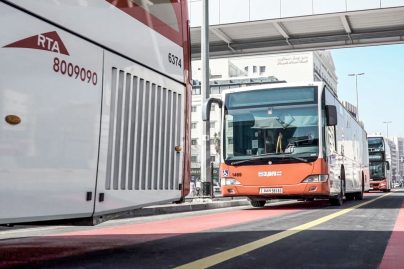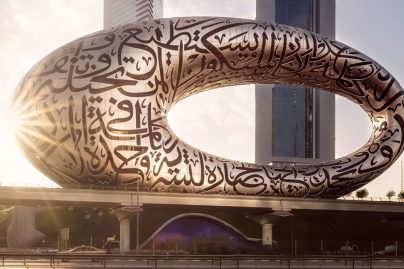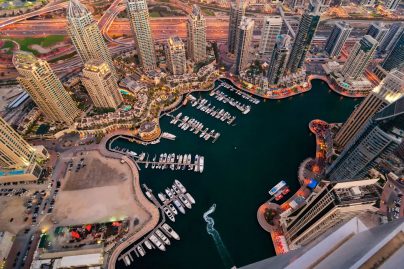The return as well as the revival of the rail
Mon 27 Dec 2021
“Rendezvous on Champs-Elysees. Leave Paris in the morning with T-E-E. In Vienna we sit in a late-night café. Straight connection, T-E-E.”
Kraftwerk’s minimalist 1976 tribute to the pleasure of long-distance train journeys will likely be familiar to music fans, but to a generation of Europeans, Trans Europe Express remains a byword for fast, luxurious international travel.
Replaced by the patchy and somewhat less glamorous EuroCity brand in 1987, the stylish red and ivory TEE trains were a response to the growth of air travel and the private car in the late 1950s.
Advanced diesel and multivoltage electric trains slashed journey times by eliminating lengthy stops at international borders to check passports and change locomotives and crews.
Premium fares included first class comfort, at-seat gourmet meals and air-conditioned open saloons with large windows, allowing passengers to relax and enjoy the views as they sped through the Rhine Gorge or crossed the Alps to Milan.
Germany’s “TEE Rheingold” raised the bar even further with an American style panorama car, seating a lucky few in a raised glass dome with 360-degree views of the route.
Fast forward to the 2020s and the short-haul air travel that lured business travelers and city breakers away from trains five decades ago is increasingly viewed as unfashionable and undesirable — even before the Covid-19 pandemic.
In the intervening years, international rail travel has also changed beyond recognition with many cross-border links being lost or partly replaced by the growing network of high-speed railways.
Since the 1990s, France’s world-famous Trains a Grand Vitesse (TGVs) have spread far beyond their home country as new lines have allowed TGVs radiating from Paris to reach Brussels, Cologne, Amsterdam, London, Barcelona, Milan, Frankfurt, Stuttgart, Zurich and Munich.
Although these superb trains have revolutionized journeys on specific routes, international rail travel in Europe remains a disjointed affair, hampered by a lack of coordination between operators on timetables, ticketing and marketing.
A combination of inertia, increasing costs, protectionism and the exponential growth in short-haul flights over the past 20 years meant that in 2018, 149 of the 365 cross-border rail links that once existed in Europe were not being exploited.
Despite huge efforts to attract passengers out of their cars, in 2018 rail accounted for less than 8% of all passenger travel in European Union member states.
In September 2020, German Transport Minister Andreas Scheuer raised eyebrows across the continent by suggesting that the network of international routes that blossomed in the 1960s and 1970s could form the template for new “TEE 2.0” services from 2025.
Scheuer added that countries will need to identify where “inadequate rail services” exist and that national routes should be “chained together” to build international services.
Those aspirations tally with a pledge signed by 25 EU transport ministers in June to boost the market competitiveness of rail journeys of up to 500 miles.
A more detailed agenda for how this will be achieved is expected later this year.
These longer routes are a significant change of direction for European high-speed rail, which has traditionally focused on competing with airlines on journeys of three hours or less.
Even at speeds of up to 200 miles per hour, now possible for most of the route between Amsterdam and Barcelona, a schedule of around eight hours is likely for the 960-mile journey, depending on how many stops are made en route. But with many travellers now turning their back on air travel for environmental reasons — not to mention the discomfort of budget airline seats, airport congestion and extended airport security checks — such long-distance routes are looking increasingly feasible.
However, delivering such a wide-ranging, ambitious and costly package of new rail projects across several countries with differing priorities and budgets is fraught with difficulty, especially in times as uncertain as these.
The sheer scale of the proposals also means that it will take many years to deliver the necessary work, even if things go as planned.
While the German government has already committed to rail projects over the next decade, delivery of the full Deutschland Takt scheme could require as much again before 2040.
Financial support from the EU Cohesion Fund will no doubt assist in many cases, especially in Eastern Europe, but as the bills from the Covid-19 pandemic stack up, there’s no guarantee that all of the schemes proposed will come to fruition.
However, with European national governments and the EU committed to achieving “net zero” carbon emissions by 2050, these exciting proposals offer a way to maintain and improve mobility for Europeans and visitors while reducing reliance on air travel and private cars.
To deliver the massive modal shift required, TEE 2.0 will look very different to its luxury predecessor, but a comprehensive and integrated network of frequent high-speed trains has the potential to transform how we travel across Europe over the next three decades.
Source: Agencies

 Apr 29 2024
Apr 29 2024













